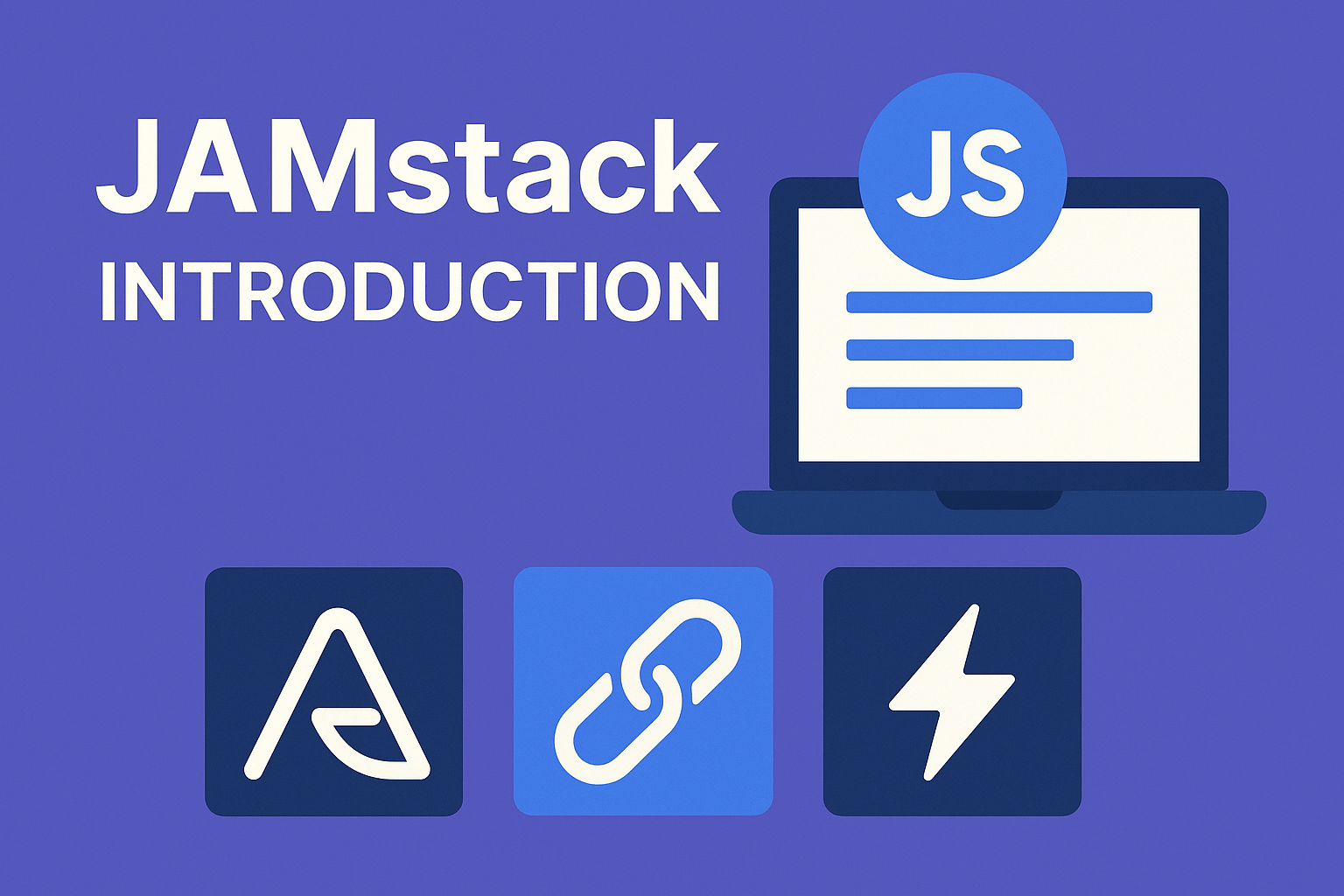
In this article, we’ll see JAMstack Introduction.
Table of Contents
In the world of web development, staying on the cutting edge of technology is crucial to delivering fast, secure, and scalable web experiences. JAMstack, a modern web development architecture, has gained significant popularity in recent years for its ability to meet these demands.
We’ll take you on a journey through the power and potential of It, exploring its core principles, benefits, and how it revolutionizes the way we build and deploy websites. Get ready to embrace the It and elevate your web development game.
What is JAMstack:
The JAMstack is a new and modern way of building websites and apps. The “JAM” comes from JavaScript, APIs, and Markup (these three components are foundational). From these three core concepts:
JavaScript: Any dynamic programming during the request/response cycle is handled by JavaScript, running entirely on the client.
APIs: All server-side functions or database actions are abstracted into reusable APIs, accessed over HTTPS with JS. Be it SaaS, third-party services, or custom-built.
Markup: Templated markup should be prebuilt at build time, usually using a site generator for content sites, or a build tool for web apps.
Sites created with the JAMstack are delivered by pre-rendering files that are served directly from a CDN, removing the requirement to manage or run web servers.
The term was coined by Mathias Biilmann, co-founder of Netlify.
Benefits
- Faster performance: JAMstack website is pre-built HTML and assets and can be served over a CDN.
- Higher security: JAMstack websites reduce server and database surface area vulnerabilities.
- Lower cost: The cost of running a JAMstack website is generally lower than comparable alternatives since it uses fewer resources.
- Better developer experience: With It, there is no tight coupling between the application backend and frontend. This means that you can select from among different CMS and content infrastructure options, removing the need for separate stacks to maintain and serve content. Using It also simplifies the process of using third-party services like Algolia and Netlify Forms.
Advantages and Disadvantages:
Advantages:
- Extremely Secure: Due to the data pre-processing as well as extensive use of APIs, It minimizes the data interactions, thereby the probability of attacks. The minimal expose of data makes it an extremely secure approach for building websites.
- Better Performance: It is providing ready-to-use data instead of creating it on every interaction dynamically, It makes the websites blazingly fast as well as delivers a commendable performance.
- Highly Scalable: With It, it is extremely easier for the developer to deploy its JAMstack website anywhere. The developer needs not to worry about the database configuration or setup, he can simply feed the data by availing the pre-processed files to the CDN.
- Better Developer Experience: The decoupled front-end and back-end, used in the It provides a modular approach to the developer, making development and testing even more targeted and effective. To add to the amazing experience provided by the JAMstack, the availability of the Static site generators(SSG) makes the development process easier and managed, transforming the provided content to the static HTML files through the predefined templates.
Disadvantages:
-
Limited Dynamic Functionality: JAMstack architecture primarily focuses on static content, which means that websites built with It may face limitations in delivering highly interactive or real-time dynamic functionalities. While JAMstack can leverage JavaScript and APIs to introduce some dynamic elements, extensive real-time interactivity might require additional workarounds.
-
Complex Backend Operations: It shifts the complexity from the server-side to the build and deployment process. Setting up automated build pipelines and integrating APIs for dynamic functionalities can be more challenging compared to traditional server-side rendering. Developers need to invest time and effort in configuring build tools and ensuring smooth integration with APIs.
-
Learning Curve: Adopting It might require developers to learn new technologies, tools, and workflows. Familiarity with static site generators, build processes, and working with headless CMS platforms may be necessary, particularly for those who are accustomed to traditional server-side frameworks.
-
Lack of Real-time Content Updates: Since It relies on pre-rendered static files, it can be challenging to provide real-time content updates without additional workarounds. Websites that require frequent content changes or rely heavily on user-generated content may need to implement additional mechanisms to update and refresh content dynamically.
-
Hosting Limitations: Hosting static files and APIs separately might require different hosting environments and setups. While hosting static files on a CDN is straightforward, hosting serverless functions or APIs might introduce additional complexity and require specific hosting providers or configurations.
References:
Conclusion
In this blog article, you knew about JAMstack. You also learned about project requirements for JAMstack sites. For examples of websites and web apps built with the JAMstack, you can also look at these official examples.
You can learn more about the JAMstack by going through the official website and the resources section.
From its modular architecture to its emphasis on speed, security, and scalability, JAMstack offers a modern and efficient approach to web development. By leveraging JavaScript, APIs, and Markup, developers can create lightning-fast, secure, and future-proof websites that deliver exceptional user experiences. So, if you’re ready to elevate your web development game, embrace the power of JAMstack and unlock a new level of innovation and efficiency in your projects.